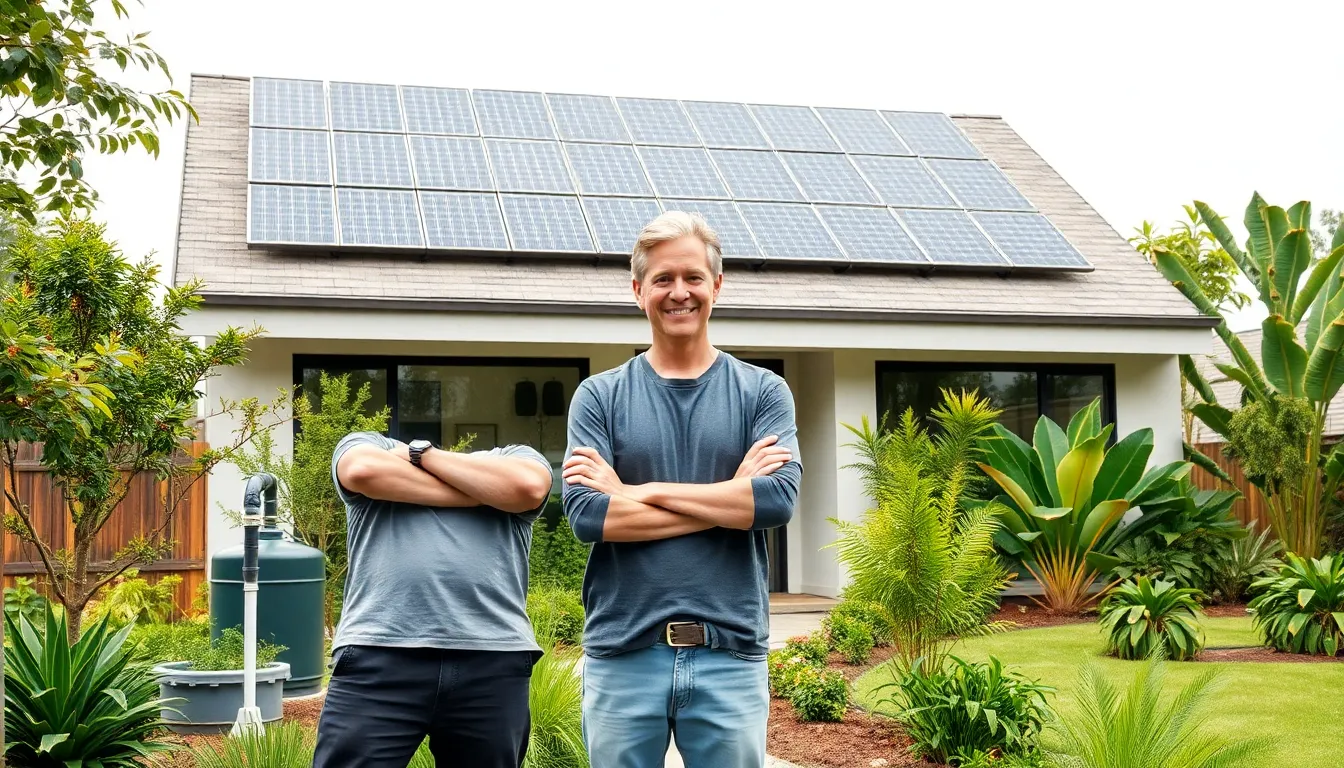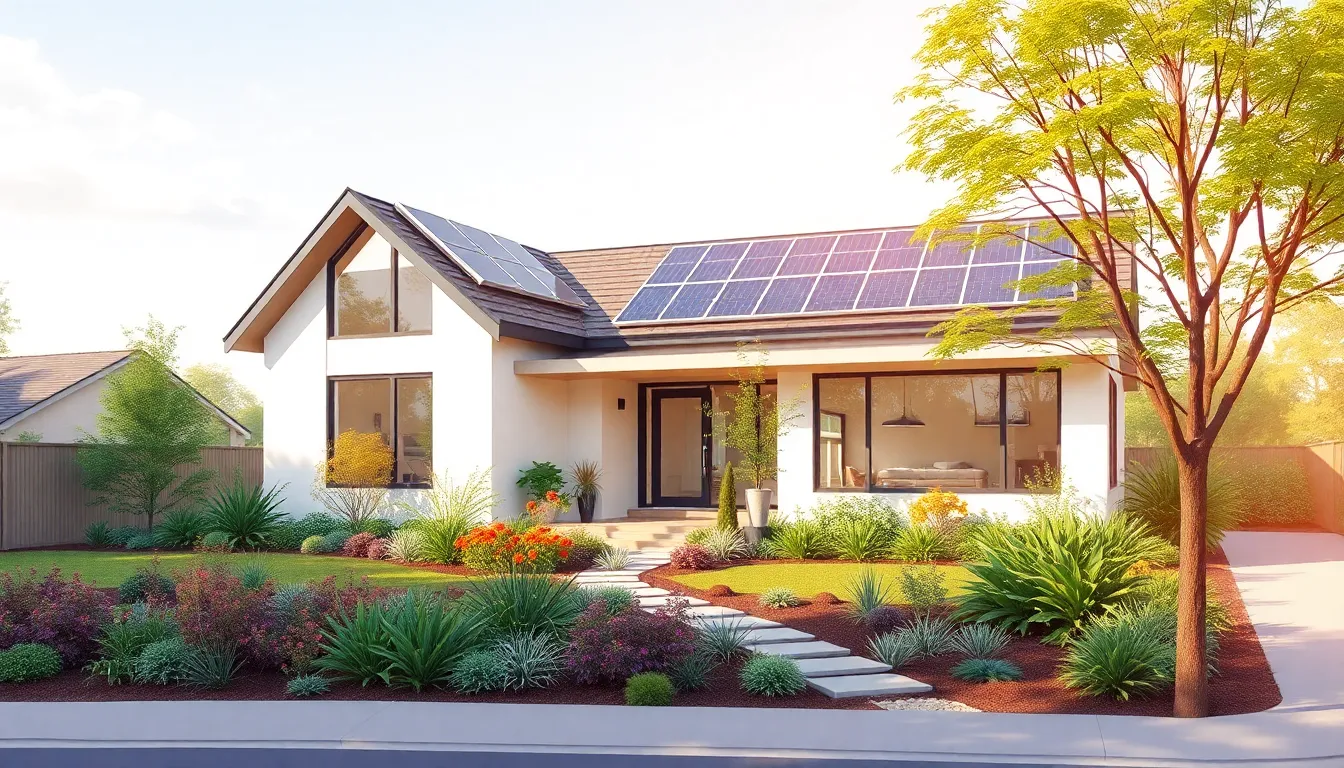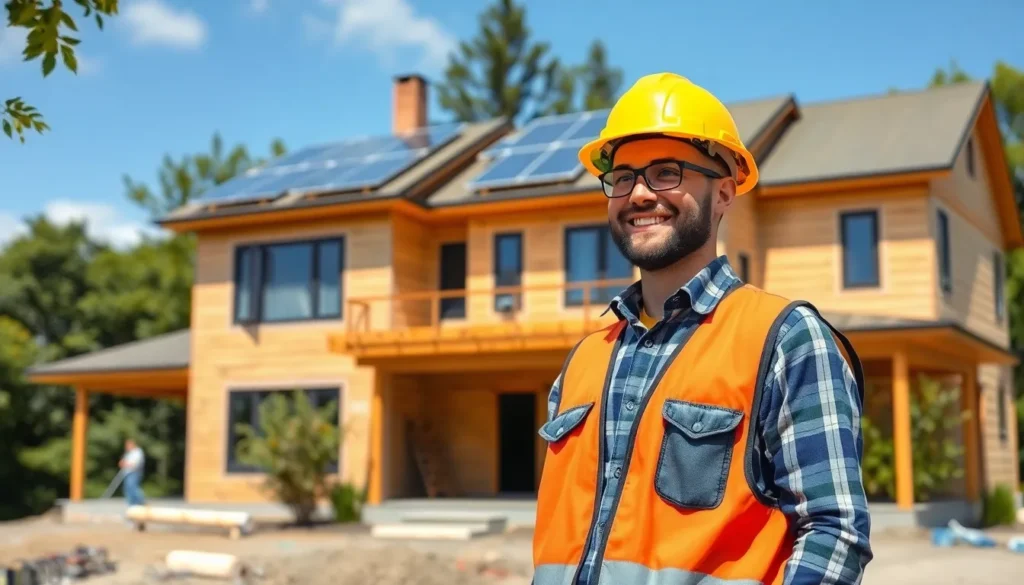Table of Contents
ToggleIn a world where Mother Nature sometimes feels like she’s on a rollercoaster ride, environmentally sustainable homes are the calming oasis we all need. Imagine living in a house that not only shelters you but also gives a high-five to the planet. It’s like having your cake and eating it too—only this cake is made from recycled materials and powered by sunshine!
Building or buying an eco-friendly home isn’t just a trend; it’s a lifestyle choice that benefits both the environment and your wallet. With energy-efficient designs and sustainable materials, these homes can help reduce your carbon footprint while keeping your utility bills in check. So why not join the green revolution? Let’s dive into the world of sustainable living, where comfort meets conscience, and every brick laid is a step toward a healthier planet.
Overview of Environmentally Sustainable Homes
Environmentally sustainable homes prioritize eco-friendly practices while ensuring comfort and functionality. These structures significantly impact both the planet and their occupants by fostering a healthier living environment.
Definition and Importance
Environmentally sustainable homes refer to residential buildings designed to reduce their ecological footprint. These homes utilize resources efficiently and incorporate renewable materials, which decreases reliance on non-renewable energy sources. Importance lies in their ability to mitigate climate change, promote biodiversity, and enhance community well-being. Sustainable designs create healthier indoor environments, contributing to residents’ physical and mental health. By choosing sustainable homes, individuals participate actively in the global effort to combat environmental degradation.
Key Features of Sustainable Homes
Key features of sustainable homes include efficient energy systems, water conservation measures, and sustainable building materials. Energy efficiency often incorporates solar panels, high-quality insulation, and energy-efficient appliances. Water-saving fixtures, like low-flow faucets and rainwater harvesting systems, greatly reduce water consumption. Using recycled materials for construction minimizes waste and supports resource conservation. Siting homes strategically allows for natural light and ventilation, enhancing comfort while reducing reliance on artificial systems. Together, these elements create homes that align with ecological sustainability and promote a better quality of life.
Benefits of Environmentally Sustainable Homes


Environmentally sustainable homes offer multiple advantages that benefit both the planet and homeowners. They minimize ecological footprints while enhancing living conditions through eco-friendly practices.
Environmental Impact
Sustainable homes utilize renewable energy sources, such as solar panels and wind turbines, which significantly reduce greenhouse gas emissions. Integrating efficient insulation and energy systems also lowers overall energy consumption. Water conservation features like rainwater harvesting and low-flow fixtures help preserve vital resources. Wildlife-friendly landscaping promotes biodiversity by providing habitats for local species. These homes play a crucial role in addressing climate change through reduced reliance on non-renewable resources.
Economic Advantages
Cost savings emerge from lower utility bills due to energy efficiency measures. Homeowners often benefit from government incentives for using renewable energy sources, making these options more accessible. Increased property values frequently occur as sustainable features become more desirable in real estate markets. Maintenance costs also decrease with durable and sustainable building materials, ensuring long-term savings. Investing in an environmentally sustainable home represents a financial decision that yields both immediate and lasting returns.
Design Principles for Sustainable Living
Sustainable living integrates design principles that prioritize ecological health and resource efficiency. These principles guide the creation of homes that meet both personal comfort and environmental needs.
Energy Efficiency
Energy-efficient homes utilize technology and design to minimize energy consumption. Installing high-performance insulation significantly reduces heating and cooling needs. Using Energy Star appliances also lowers electricity usage, which translates to cost savings. Solar panels provide a renewable energy source, further decreasing reliance on fossil fuels. Incorporating passive design elements, like strategically placed windows for natural light, maximizes natural ventilation and reduces the need for artificial lighting. These features combined contribute to lower carbon footprints while ensuring comfortable living spaces.
Water Conservation
Water conservation features play a critical role in sustainable home design. Rainwater harvesting systems collect and store rainwater for irrigation or non-potable uses. Installing low-flow fixtures helps reduce water wastage without sacrificing performance. Drought-resistant landscaping minimizes the need for irrigation, contributing to significant water savings. Efficient irrigation systems, such as drip irrigation, deliver water directly to plant roots, optimizing usage. These strategies not only conserve a vital resource but also lower utility bills, making sustainable living both environmentally and financially beneficial.
Materials Used in Sustainable Homes
Sustainable homes prioritize the use of eco-friendly materials to reduce environmental impact. These materials contribute to energy efficiency and resource conservation.
Renewable Resources
Renewable resources play a vital role in sustainable home construction. Materials like bamboo and cork regenerate quickly, minimizing resource depletion. Using sustainably sourced wood ensures a lower carbon footprint. Straw bales and reclaimed wood also provide excellent insulation while being environmentally friendly. Each option supports natural ecosystems and promotes durability. Incorporating renewable materials often enhances aesthetic appeal, aligning functionality with sustainability.
Recycled Materials
Recycled materials significantly contribute to eco-friendly home building. Items like reclaimed bricks and recycled glass reduce waste and conserve energy in production. Metal and plastic recyclables find new life as structural elements and décor. Utilizing these materials lessens the demand for new resources, promoting a circular economy. Many homeowners find that incorporating recycled elements adds unique character to their spaces while supporting eco-conscious practices. These choices lead to reduced landfill waste and foster a sustainable lifestyle.
Challenges and Solutions in Building Sustainable Homes
Building environmentally sustainable homes presents several challenges, but innovative solutions help overcome these hurdles effectively.
Common Obstacles
High construction costs often deter homeowners from pursuing sustainable options. Limited access to green materials can impede project timelines. Local building codes may not support sustainable practices, leading to complications during construction. Additionally, insufficient knowledge about sustainable technologies reduces the number of qualified builders available. Factors such as inadequate financing options and skepticism regarding the benefits of green living can also hinder adoption. These obstacles pose significant barriers for many, delaying progress toward more sustainable housing.
Innovative Solutions
New financing models emerge to ease the financial burden associated with sustainable building. Government incentives and rebates encourage investments in green technologies. Collaborations between builders and suppliers enable better access to eco-friendly materials. Education programs for contractors and homeowners enhance knowledge about sustainable practices. Advanced technologies, such as modular construction, streamline the building process and reduce waste. Additionally, community outreach fosters support for sustainable initiatives, increasing overall awareness. These solutions significantly contribute to the successful implementation of environmentally sustainable homes.







